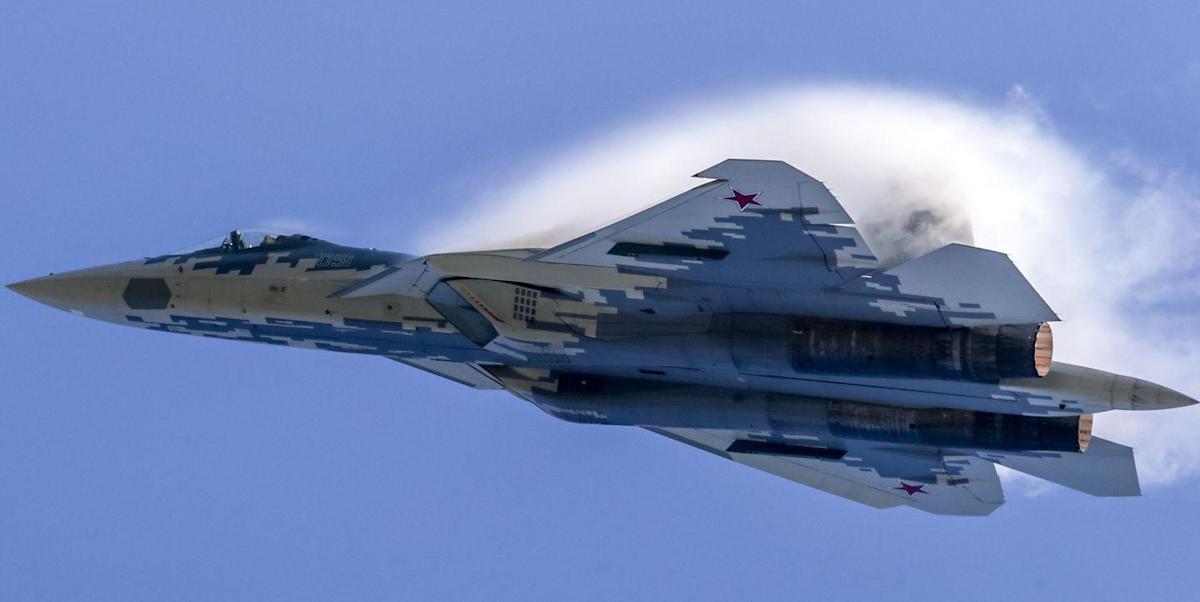
Russia has managed to lower the radar signature of its first stealth jet, the Su-57, by adding a new grille to the air intakes.
Photographs of the modified jet with coaxial radial grating were shared by the Russian media today.
The grating is made of radar absorbing material and is placed in the air intakes of the Su-57. In comparison, Lockheed Martin has used an S-channel design for the intakes of the F-22 aircraft to reduce the direct frontal transmission of radar by the engine compressor blades.
Su-57 jet’s stealthy features
Sukhoi’s patent for the Su-57 prototype stealth features cites an intention to reduce average RCS to approximately 0.1-1 m2.
The infrared search-and-track sensor housing is turned backwards when not in use and its rear is treated with radar-absorbent material (RAM) to reduce its radar return. To mask the significant RCS contribution of the engine face, the walls of the inlet ducts are coated with RAM and the partial serpentine ducts obscure most of the engines’ fan and inlet guide-vanes (IGV); the remaining exposed engine face is masked by a radar blocker similar in principle to that used on the F/A-18E/F.
The aircraft canopy is made of composite material and 70-90 nm thick metal oxide layers with enhanced radar wave absorbing to minimize the radar return of the cockpit by 30% and protect the pilot from the impact of ultraviolet and thermal radiation.
